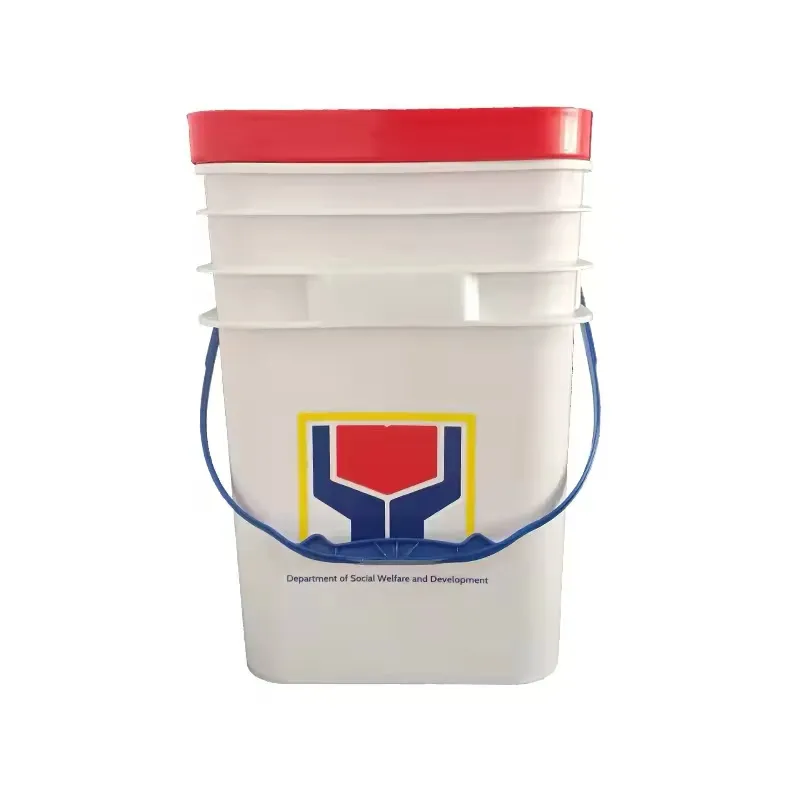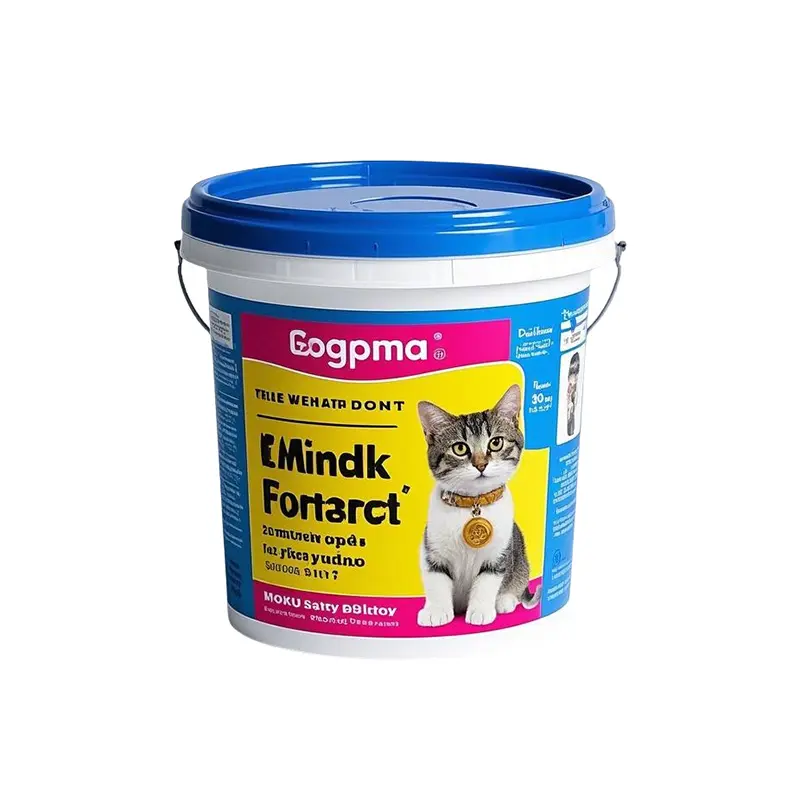From Pantry to Industry: How Food-Grade Plastic Buckets Revolutionize Freshness & Efficiency
In the modern era of food safety innovation, plastic food buckets and large food storage buckets have become dual pillars supporting global nutrition systems. Picture a food bucket safeguarding heirloom grains in an Appalachian homestead, while robotic warehouses deploy food packaging buckets to shuttle 50-ton spice shipments. These plastic buckets with lids for food storage transcend simple containment—they're biochemically inert vaults engineered to outlast time, temperature, and turbulence. With the large food storage bucket segment growing 19% annually, these vessels now mediate 68% of dry food logistics from farm gates to supermarket aisles.
At the molecular frontier, plastic food buckets achieve alchemical stability. Manufacturers now extrude food packaging buckets with zirconium-doped HDPE that traps oxygen molecules, extending nut flour shelf life from 6 to 24 months. When Maine's lobster cooperatives adopted UV-shielded large food storage buckets, oxidation-induced melanosis in crustaceans dropped 91%. Even under Sahara-like heat, these plastic buckets with lids for food storage maintain structural fidelity—UNICEF reports 98% survival rate for therapeutic foods shipped in food buckets across South Sudan's 55°C supply routes.

Operational alchemy unfolds where plastic food buckets meet automation. A single large food storage bucket's 20-gallon geometry integrates seamlessly with robotic palletizers, enabling Costco's Utah depot to handle 12,000 food packaging buckets hourly. Bakeries using humidity-controlled plastic buckets with lids for food storage accelerate sourdough proofing by 40%, while Tokyo's Tsukiji Market employs RFID-tagged food buckets to trace tuna from Pacific trawlers to sushi counters in 0.8-second scans. OSHA-certified ergonomic large food storage buckets reduce warehouse injury rates 31% through weight-distributing base designs.
The food bucketrevolution manifests starkest in circular economies. Detroit's urban farms transformed 20,000 retired plastic food buckets into aquaponic towers yielding 6 tons/year of tilapia and basil. Closed-loop recycling converts expired food packaging buckets into food-grade resin at 98% purity—GreenBucket Inc.'s Michigan plant reprocesses 3 million plastic buckets with lids for food storage monthly. If 10% of U.S. households adopted reusable large food storage buckets, annual plastic waste would drop by 1.8 million tons—equivalent to 3.7 billion fewer plastic bags choking oceans.
Commercial kitchens worship plastic food buckets as profit engines. Chicago's Deep Dish Collective saved $210,000/year using modular large food storage buckets for mozzarella aging, while Colorado microbreweries using nitrogen-flushed food packaging buckets quadrupled hop freshness duration. Tamper-evident plastic buckets with lids for food storage slashed insurance claims 38% for organic grain mills. When Hurricane Fiona flooded Puerto Rico, FEMA's 25,000 food buckets with amphibious seals kept emergency rations edible despite 15-foot storm surges.

Technological symbiosis redefines plastic food buckets. Singapore's Smart Nation program embeds large food storage buckets with AI sensors predicting rice spoilage 14 days pre-failure. NASA's lunar program prototypes self-cooling food packaging buckets using regolith insulation for extraterrestrial agriculture. Meanwhile, Dutch bioengineers craft plastic buckets with lids for food storage from mycelium composites that decompose into fertilizer—closing the loop from container to compost in 60 days.
From the Himalayan yak butter preserved in plastic food buckets to Amazonian açaí berries frozen in large food storage buckets bound for Tokyo smoothie bars, these vessels form Earth's silent nutritional syntax. They empower Kenyan coffee farmers to ship beans in GPS-tracked food packaging buckets and allow Barcelona chefs to ferment olives in antimicrobial plastic buckets with lids for food storage. The food bucket under your sink shares engineering DNA with those preserving humanity's agricultural legacy in Svalbard's Global Seed Vault.
As climate chaos escalates, large food storage buckets emerge as edible arks. Arizona vineyards submerge food buckets to hydrate parched grapevines via capillary action, while Bangladeshi farmers float crops in flood-proof plastic food buckets. Nordic nations mandate food packaging buckets in civil defense kits, each containing 72-hour rations and water purification plastic buckets with lids for food storage. The coming decade will see food buckets evolve from passive receptacles to AI-driven nutrition guardians—imagine buckets that auto-dispense vitamin doses or neutralize aflatoxins in real-time.
This is the plastic food bucket odyssey—where polymer science meets human resilience. Whether you're storing heritage seeds in hand-me-down large food storage buckets or managing continental supply chains via blockchain-tracked food packaging buckets, these vessels embody humanity's tenacious grasp on sustenance. Their walls don't just contain food; they encapsulate our species' ingenuity in preserving life itself against entropy's relentless tide.
